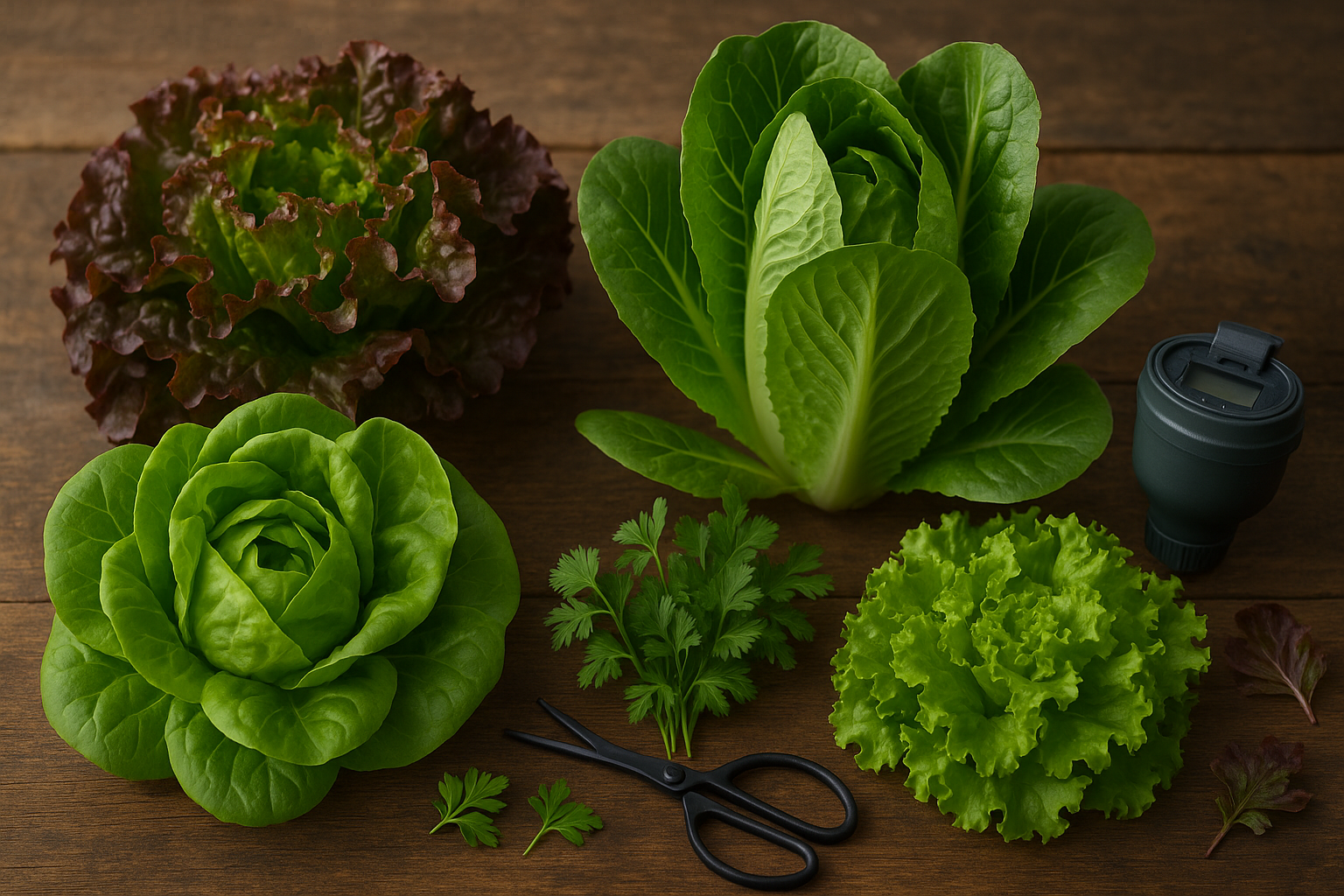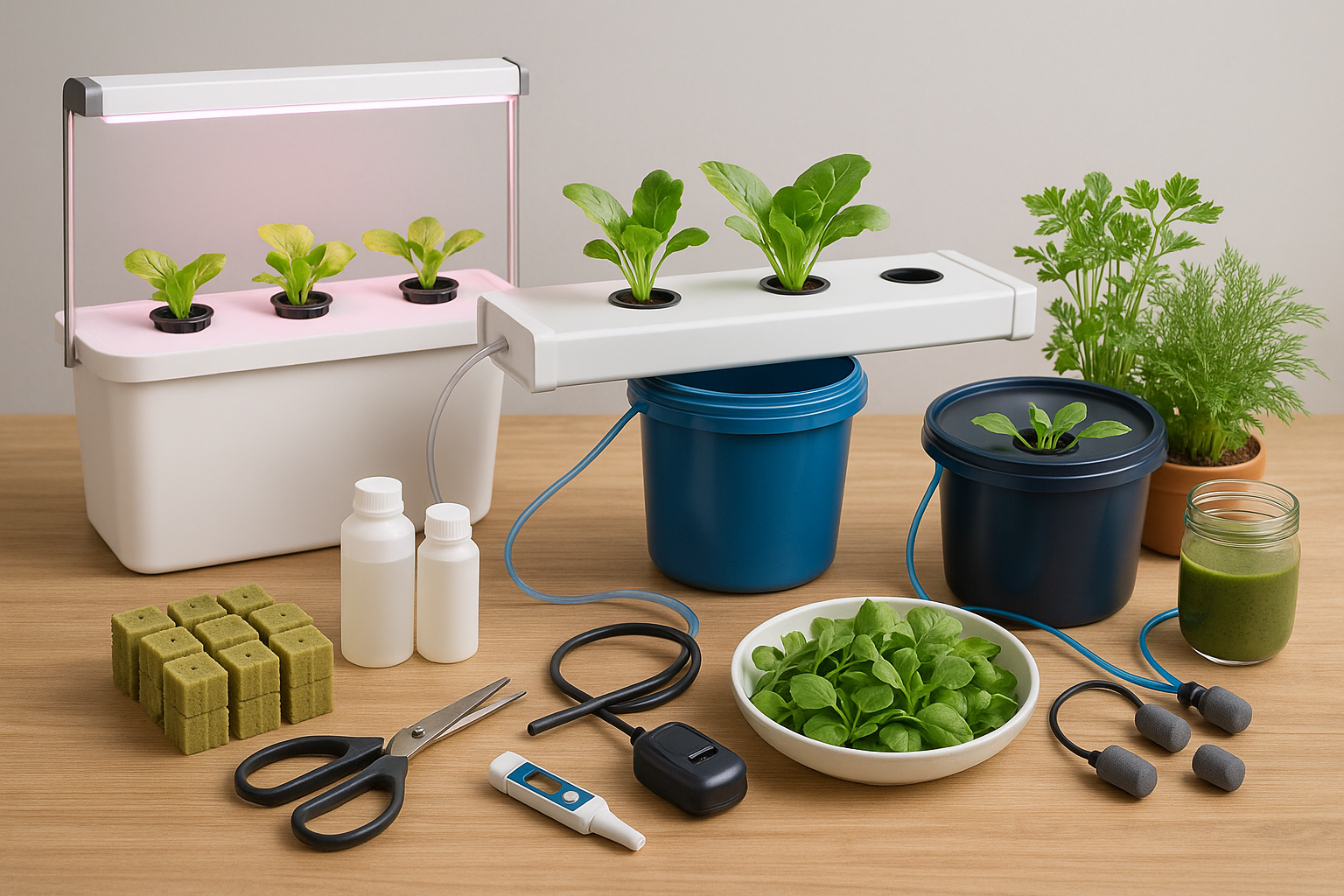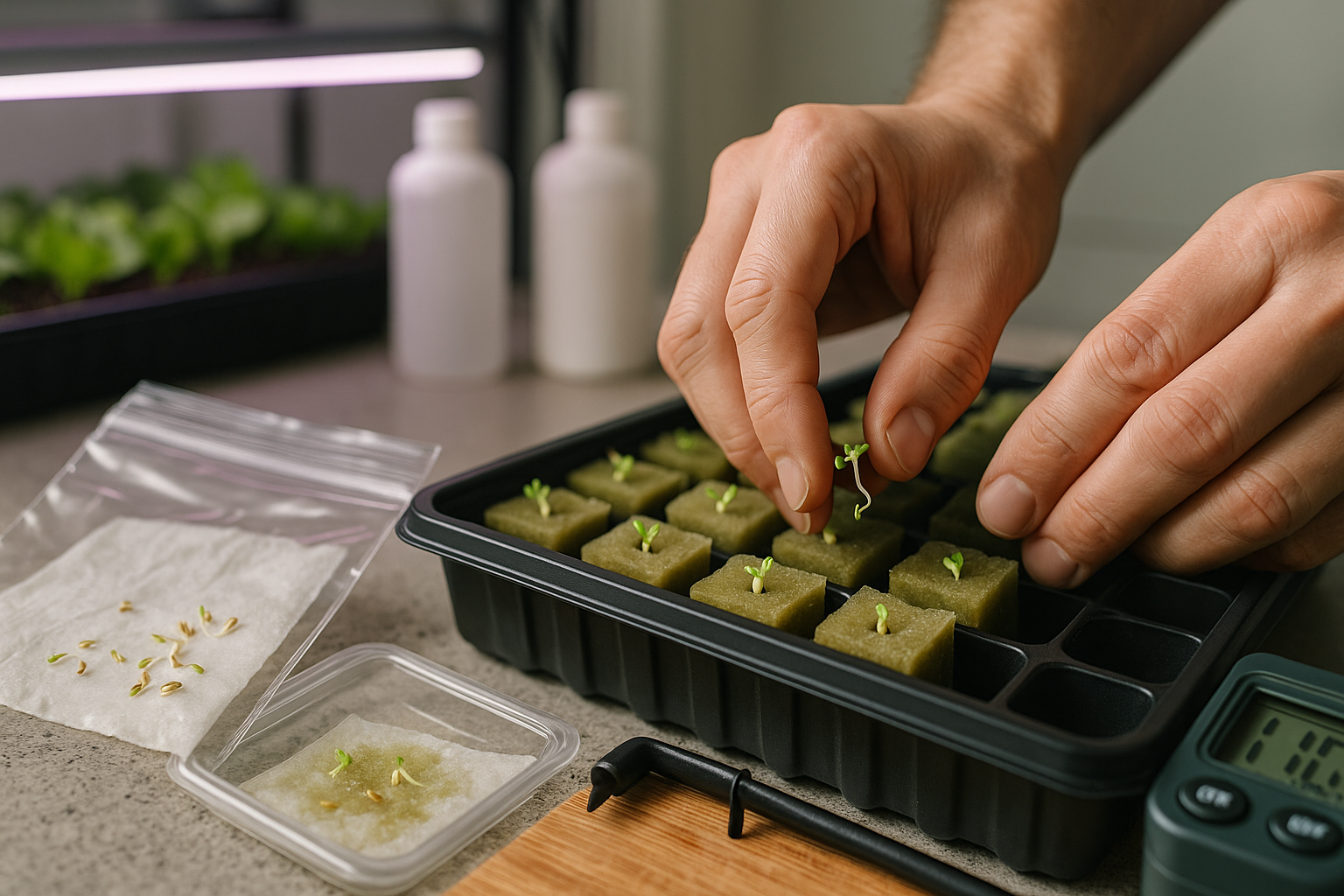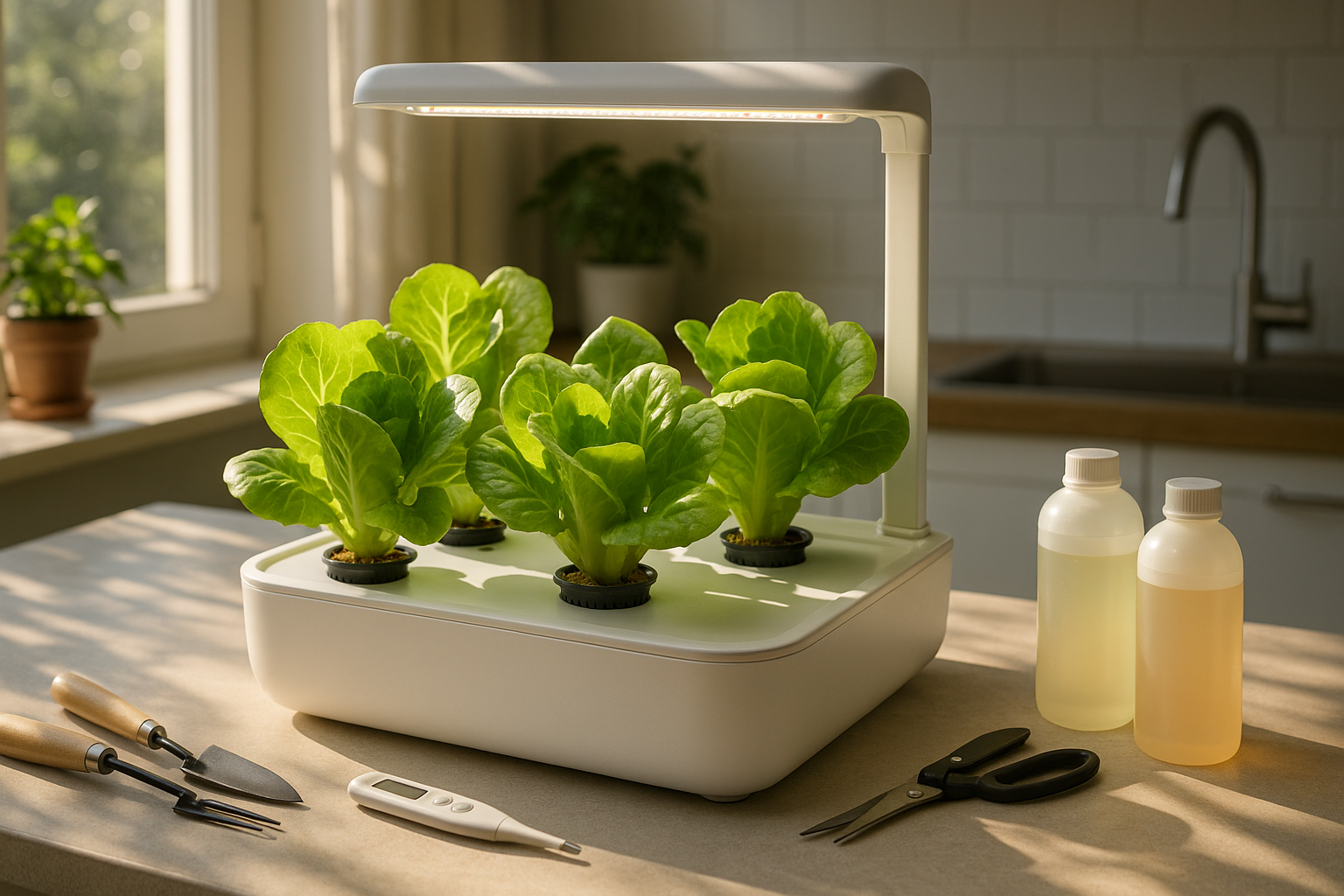Introduction to Hydroponic Lettuce Growing
Indoor hydroponic lettuce is transforming how home gardeners enjoy fresh greens all year round. Instead of digging in soil, you can grow crisp, delicious lettuce indoors without a single handful of dirt, thanks to simple hydroponic setups. Imagine harvesting a healthy salad right from your countertop or spare room, no matter the season or weather outside.
Hydroponics uses water, nutrients, and light to grow lettuce faster and more efficiently than traditional gardening. This means no muddy mess, minimal pests, and fewer weeds. Even if you’ve never tended a garden before, you’ll find hydroponics surprisingly accessible. Many beginner-friendly systems require just a few basic supplies: a water reservoir, a small LED grow light, net pots, and a nutrient solution.
Space isn’t a limitation either. Whether you live in an apartment or have a sunny corner in your kitchen, you can find a setup that works for you. Beyond the convenience and space-saving benefits, indoor hydroponic lettuce delivers the satisfaction of homegrown flavor on demand. With this method, you’re no longer at the mercy of grocery store supply or outdoor climate, giving you fresh, leafy greens whenever you want, all from the comfort of home.
Choosing the Best Lettuce Varieties for Hydroponics

When growing lettuce hydroponically indoors, selecting the right variety can make all the difference for an easy and productive harvest. Butterhead lettuce, such as Bibb or Boston, is a favorite among hydroponic growers due to its compact shape, tender leaves, and mild, buttery flavor. Butterheads also thrive in controlled environments, finishing in as little as 35–45 days.
Romaine, known for its crisp texture and slightly stronger taste, grows reliably in hydroponic setups but takes a week or two longer to mature compared to Butterheads. For even quicker harvests, consider loose-leaf lettuces like Red Sails or Salad Bowl—these varieties start producing tender leaves in just three to four weeks, allowing you to snip off outer leaves and encourage continual regrowth, perfect for home salad bars.
When sourcing seeds, opt for varieties labeled specifically as “hydroponic friendly” or “suitable for indoor growing,” which are often found at specialty seed companies or hydroponic retailers. These seeds are bred for resilience in soilless environments and are less likely to bolt under indoor LED lighting. Stay clear of iceberg types, which demand more space and time and can struggle with disease indoors.
Ultimately, compact growth habits, short maturation periods, and a reputation for disease resistance are key reasons Butterhead and loose-leaf lettuces outperform others in hydroponics. For best results, start with reputable seed sources, pay attention to germination rates, and experiment with a few varieties side-by-side to find your favorites. With the right lettuce, your indoor hydroponic garden will deliver lush, flavorful greens all year round—no backyard required.
Essential Hydroponic Systems and Equipment

When starting with hydroponic lettuce at home, there are a few beginner-friendly methods to consider—each manageable even in small spaces.
The Kratky method is the simplest: lettuce seeds are placed in net pots that sit in a water reservoir, allowing the roots to dangle directly into a nutrient solution. This method eliminates the need for pumps or electricity, making it a favorite for absolute beginners.
The Nutrient Film Technique (NFT) involves a thin stream of nutrient water flowing constantly over the plant roots inside a slightly sloped channel, which requires a small pump.
Deep Water Culture (DWC) suspends plant roots in a large, aerated reservoir, with an air pump to keep the water rich in oxygen—perfect for rapid lettuce growth.
Regardless of the system, you’ll need some essential equipment:
- A reliable water reservoir (like a bucket or storage tote)
- An inert growing medium such as rockwool, clay pebbles, or coco coir to anchor your seeds
- Dedicated hydroponic nutrients (lettuce thrives with a high-nitrogen formula)
- A pH tester to keep solution levels between 5.5 and 6.5
- Good grow lights
Lettuce needs strong, consistent indoor lighting—invest in full-spectrum LED grow lights or fluorescent tubes and keep them 6-12 inches above the canopy for 14-16 hours a day.
When choosing between building your own system and getting a commercial kit, consider your comfort with DIY setups. If you prefer plug-and-play convenience and quick results, a countertop hydroponic kit might be best. But if you’re handy and want to save money or customize your setup, making your own from food-grade containers can be both fun and affordable.
Whichever route you choose, consistent, bright lighting will be the difference between lanky, pale lettuce and crisp, healthy greens you’ll love harvesting.
Step-by-Step Guide

Start your hydroponic lettuce journey by soaking seeds in a damp paper towel and sealing them in a zip-lock bag, then keep them in a warm, dark spot for two to three days. Once you see tiny roots, gently transfer the germinated seeds into seed-starting plugs or small pots filled with an inert medium like rockwool or coco coir.
Place these in your hydroponic tray and add just enough water to keep them moist but not soggy. After a week, when seedlings develop a second set of leaves, transplant them into your main hydroponic system, ensuring the roots are dangling into the nutrient solution.
Mix hydroponic nutrients carefully, following the manufacturer’s instructions to avoid overfeeding. Use clean, room-temperature water and stir well. Check water quality with a TDS (total dissolved solids) meter and monitor pH, aiming for a range between 5.5 and 6.5; adjust using pH up or down solutions as needed.
Every few days, top off the reservoir with fresh water to keep plants hydrated, and watch water levels so roots stay submerged without drowning. Inspect leaves and roots weekly for any signs of pests or diseases—aphids or root rot, for example.
Set up a timer for LED grow lights to run 12–16 hours daily, and adjust the height to keep light close but not burning the leaves. If you notice yellow leaves, test both nutrient strength and pH to correct any deficiencies. Wilting might mean poor water circulation or low oxygen; add an air stone or refresh the reservoir water.
By following these simple yet essential steps, even beginners can enjoy a steady harvest of crisp, homegrown lettuce from their own hydroponic setup.
Maintaining Healthy Growth and Preventing Problems
Keeping your plants thriving starts with vigilant monitoring and quick action. Consistently check leaves for discoloration, holes, or curling—these are telltale signs of pests or nutrient deficiencies. Yellow leaves often indicate a lack of nitrogen or overwatering, while brown leaf edges may signal low humidity.
Use sticky traps or visually inspect the undersides of leaves to catch early pest infestations. If you notice slow growth, check your nutrient mix and pH levels; an unbalanced solution is a common culprit.
Aim for temperatures between 68°F and 75°F (20°C–24°C) and maintain relative humidity around 50%–60% to keep plants comfortable and mold at bay. Proper airflow is just as important—circulating fans prevent hotspots, reduce humidity pockets, and discourage pests.
If you notice wilting, examine the roots for rot or blockages, then flush the system and replace it with fresh water and nutrients. Cleaning your equipment weekly is essential: algae, salt buildup, or debris can harbor pathogens and stunt plant growth.
Make it a habit to inspect pumps, reservoirs, and tubing for clogs or leaks. Use mild soap or a hydrogen peroxide solution to sanitize surfaces. By incorporating these checks into your routine, you’ll spot problems before they get out of hand and keep your plants healthy and vibrant throughout every stage of growth.
Harvesting and Enjoying Your Indoor Lettuce
Knowing when your indoor lettuce is ready to harvest is all about observation. Look for leaves that are broad, crisp, and vibrant—usually when they’re 4-6 inches tall, they’re tender and full of flavor.
For a steady supply, try the cut-and-come-again method: snip outer leaves with clean scissors about an inch above the soil, leaving the inner rosette to regrow for future harvests. If you prefer harvesting the full head, wait until your lettuce forms a loose, mature bunch and cut it off at the base; this works great for heading varieties like butterhead or romaine.
Once picked, keep your greens fresh by gently rinsing them, drying thoroughly, and storing them in a breathable bag or container lined with a paper towel in the fridge—this helps prevent wilting and decay.
Enjoy your homegrown lettuce straight away in crisp salads, layer it onto sandwiches and wraps, or toss it with other veggies for a garden-fresh stir-fry. The satisfaction of eating something you grew yourself makes every meal a little brighter, and if you stagger your plantings, you can enjoy that just-picked taste again and again.
Health and Sustainability Benefits of Hydroponic Lettuce
Homegrown hydroponic lettuce packs a punch when it comes to both health and sustainability, far surpassing store-bought greens. Harvesting lettuce straight from your own system means you get leaves that keep their full nutrient profile—rich in vitamins A, C, and K, along with essential minerals like folate and iron. Freshly picked hydroponic lettuce is often crisper and tastier, without the nutrient loss that comes from long shipping and storage.
On the sustainability side, hydroponics uses up to 90% less water than traditional soil gardening by recirculating water through the system. It also eliminates the need for chemical-heavy soil and drastically reduces pesticide use, making your greens cleaner and safer for your family. Growing in a controlled environment means fewer pests and diseases, so there’s no harmful runoff into local waterways.
Once you’re comfortable growing lettuce, try expanding to other leafy favorites like spinach, kale, or Swiss chard—each thrives in hydroponic setups. This way, you’ll enjoy a homegrown salad bowl that’s not only healthy for you but also gentle on the planet.
